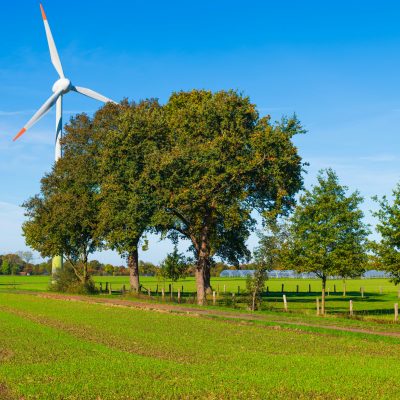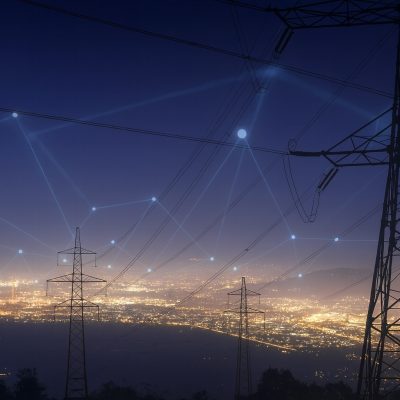Energy, much more than a market

Once an economic necessity, the integration of the European energy market has now become a political one. Yet the sense of urgency expressed in the Letta report is reflected to varying degrees in the initiatives put forward by the European Commission. This notable asynchronicity is no more than the reflection of considerations that are above all political. The sense of urgency must not lead to a simplification policy that would undermine the Letta doctrine in this area, as is currently the case. Above all, it must enable the European Commission to show ambition in its future proposals, so as to fully enshrine the aim of integrating and transforming the internal energy market.
On Thursday 26 June 2025, a European Council will be held, the agenda of which will include “the difficult international context and our internal economic priorities, such as deepening the single market“. This will be an opportunity for the heads of state and government to take stock of progress, more than a year after the publication of the Letta report, which highlighted the lack of integration in several sectors, including energy.
“Europe must transfer the sense of urgency and decisive action demonstrated during the recent crises to its everyday operations, delivering change across its energy system and completing concrete projects swiftly“.[1]
Enrico Letta, “ Much more than a market “, April 2024.
Back in February 2011, Europe’s heads of state and government called for 2014 to be the date by which “the internal market should be completed so as to allow the free movement of gas and electricity“.[2] Ten years after the deadline was set, the Letta report’s findings are as cruel as they are unambiguous: the fragmentation of the European energy market persists, and the pursuit of the integration process appears more risky than ever. Indeed, when faced with geo-economic upheavals, such as the first gas shock in history in the summer of 2021[3] , the initial reflex of Member States is to prioritise their national interests over the European interest. Whether by competing with each other to acquire cargoes of liquefied natural gas, or by not signing bilateral solidarity agreements to reduce gas consumption in one country to export it to another if needed, the energy crisis initially brought national egos to the fore. It was only when it became clear that only greater cooperation between the 27 Member States could effectively stem the effects of the crisis that the European Union (EU) was able to coordinate a response through the REPowerEU plan of May 2022. For example, by adopting a gas consumption reduction target for each Member State in order to exert sufficient pressure on the market to bring prices down. The race for vaccines by each Member State at the start of the COVID-19 period shows that national interests tend to take precedence over the European interest. For the EU, the danger therefore lies in seeing this behavior happen again when the next exogenous shock hits the old continent.
In this respect, with gas prices still twice as high as before the crisis, as well as recent events punctuated by Donald Trump’s actions to “weaken multilateralism and increase pressure on the EU“[4] , the diagnosis and recommendations of the Letta and Draghi reports are legitimised – if proof were needed. Above all, they heighten the sense of urgency, with the capitals in turn stepping up the pressure on the European Commission. It was against this backdrop that the Commission unveiled a number of initiatives, previously outlined in the Competitiveness Compass[5] , the EU’s new economic doctrine for the next five years:
- The Clean Industrial Act, an action plan designed to support the competitiveness and resilience of businesses by accelerating their decarbonisation;
- The Affordable Energy Action Plan to reduce energy prices for citizens and businesses;
- The so-called “omnibus” packages to simplify the regulatory framework for citizens and businesses by cutting red tape;
- The strategy to make the internal market simpler, simple, seamless and strong.
A number of lessons can be drawn from these four initiatives, and several limitations identified. While there is now a consensus on the diagnosis set out in the Letta report, the solutions it recommends are not all taken up with the same enthusiasm. In other words, the sense of economic urgency described above is only reflected to varying degrees depending on the initiatives concerned. This noticeable asynchronicity is simply a reflection of political considerations.
A simplification policy with deregulatory overtones
Firstly, and pragmatically, the European executive immediately put the emphasis on the simplification policy, resulting in the revision of several texts from the European Green Pact. Initially highlighted in the Letta report, such an initiative should lead to rapid gains in competitiveness. However, its implementation marks the first notable departure from the recommendations of the report on the future of the single European market.
As a reminder, the latter’s doctrine recommended the use of the so-called “omnibus” method to target “redundant, obsolete and incoherent” regulations[6] in a consensual manner, thanks to prior “identification“, in order to eliminate them rapidly. At the same time, it was recommended that an in-depth political debate be held on the fundamental principles of the simplification policy. However, the discussions concerning the directives on the due diligence (CS3D) and on the publication of information on the sustainability of companies (CSRD) illustrate the deviation from the modus operandi described above. In fact, an effective simplification policy as advocated in the Letta report should be based first and foremost on an exhaustive inventory of European standards and other requirements, coupled with a detailed assessment of the initial raison d’être of rules deemed too restrictive. Moreover, a meticulous examination to identify the factors that give rise to administrative complexity: the phenomenon of over-transposition or superposition, rules that need updating because context changes, disproportion between the obligations required and the operational capacity of the entities subject to them, etc.
On the other hand, the current simplification policy sees the political debate pre-empt this identification stage. There is a risk that it will lead to a deregulatory process, as there is no real inventory to assess whether European requirements are bureaucratic or not. An inventory that would have provided better guidance for political decision-making. Another notable limitation is the absence of an impact study to truly quantify the economic benefits of regulatory simplification. Admittedly, the European Commission has been able to put forward a target of €37.5 billion in annual savings for businesses by the end of the[7] mandate. However, the reliability of such a figure is highly questionable given that it is an estimate based on a figure that is itself approximated by the EU’s statistical office.[8] Finally, companies that have already begun to comply with the rules under review will lose a comparative advantage, at the risk of creating what we would describe as a “green stranded asset“, i.e. a green investment that loses value and whose return on investment is delayed by the change in legislation. In addition to discouraging, at least in part, any new efforts in this direction.
In short, while the speed with which the European Commission has taken up the subject of regulatory simplification is welcome, it is also important to ensure that the urgency of the situation does not lead the EU to deny what constitutes its main comparative advantage in the face of international competition: being a standard-setting power, which is a guarantee of regulatory stability for investors. In order to maintain this advantage, we recommend that the omnibus policy be accompanied by a review of the state of the art of reporting obligations for companies at European and national level. Such an inventory would make it possible to identify and objectify the real potential for simplification, while at the same time listing best practice in the design and drafting of legal texts in order to facilitate their implementation.
Strengthening political integration to bring down energy prices
Secondly, the integration objective of the Letta report on the internal energy market is only partially enshrined in the initiatives presented. This can be explained by a form of political timidity on the part of the European executive, aware that greater integration depends above all, as the report emphasised, on the ability to “strengthen mutual trust between Member States“. Yet, confidence was particularly shaken during the energy crisis, as mentioned above. Despite the economic rationale of highlighting the expected gains from further integration of the electricity market (between €40 and €43 billion a year by 2030, compared with around €34 billion in 2022), the main challenge remains political. It lies in the European Commission’s ability to convince the Member States that, for a common project, an infrastructure can present a different degree of profitability and/or return on investment depending on the Member States involved. In other words, that each Member State accepts that it is not necessarily to be the main beneficiary of the expected spin-offs from the deployment of an infrastructure crossing its territory, provided that the latter enables greater integration of the European market.
If the integration of energy markets is to be credible, the necessary European funding must be allocated. In this respect, the discussions on the future Multiannual Financial Framework (MFF) and the Connecting Europe Facility (CEF) will serve as a litmus test of the Commission’s credibility and willingness to really focus on these issues. At the same time, the investment policy will have to be backed up by a greater emphasis on planning network infrastructures on a European scale, whether in terms of optimising routes, managing bottlenecks and congestion, or taking account of the challenges of securing supplies and the resilience of the energy system. Only if these two criteria are met will it be possible to give full substance to the integrating ambition outlined in the Letta report and create the conditions for greater social acceptability. Failing this, there is a risk that Member States will continue to engage in deadly internal competition in order to reduce energy prices – at the risk of doing so artificially via subsidies – in an attempt to be more attractive than the other Member States.
Highlighted in a dedicated action plan, the issue of energy prices remains the Commission’s main priority in the short term. Resolving the existing price differential in the face of international competition, which is proving to be structural, will nevertheless not be possible in the very short term. In this respect, the Commission’s stated commitment to lowering prices for European businesses and consumers may be questionable given the scope of the initiative. By seeking to reduce prices for consumers and businesses, it runs the risk of simply raising expectations that are difficult to achieve. In view of the limited room for maneuver available – whether economic or political – we recommend that the European doctrine on lowering energy prices be updated to refocus on the most vulnerable citizens and companies that are in a position to put in place decarbonisation plans based, in particular, on the electrification of their business model. In doing so, the Commission’s forthcoming recommendations to Member States on network and system costs, taxes and levies, and supply costs will have to prioritise these stakeholders in the interests of efficient spending and social justice. Nor can they, as is currently the case, overlook the modernisation of competition policy and the harmonisation of tax rates, two areas that are essential if a genuine European industrial policy is to be developed.
In conclusion, if the Commission really intends to complete the integration of its internal energy market, it will have to go beyond simply making the 27 Member States responsible, which up to now has consisted of pointing out that “the correct application of the rules of the single market is a shared responsibility“.[9] It will have to use all the legal tools at its disposal to ensure diligent implementation of the internal market rules. By refusing to penalise States that fail to apply the rules of the single market, it is undermining its leadership and ultimately contributing to the fragmentation of its market.
[1] Letta, E. “ Much more than a market “, April 2024.
[2] Council of the European Union, “Conclusions“, 4 February 2011.
[3] Nguyen, P-V., Pellerin-Carlin, T. “Flambée des prix de l’énergie en Europe“, Institut Jacques Delors, 6 October 2021.
[4] Letta, E. “Trump has handed Europe a chance to shape its own future“, Financial Times, 22 June 2025.
[5] Eisl, A. & Nguyen, P.-V. ” La compétitivité, boussole européenne pour faire face à la tempête climatique?“, Infographie, Institut Jacques Delors, February 2025.
[6] Letta, E. “ Much more than a market “, April 2024, page 130.
[7] Statement by President von der Leyen on the EU’s competitiveness compass, 29 January 2025.
[8] See footnote 22 of the Competitiveness Compass.
[9] See the strategy to make the internal market simpler, more homogeneous and more solid.




